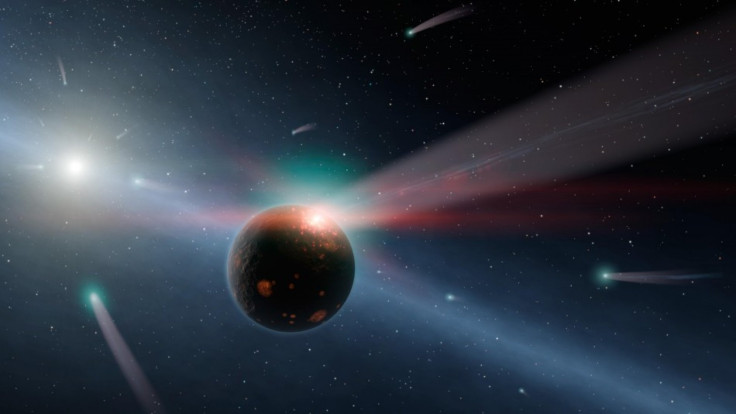NASA’s Spitzer Space Telescope Detects Comet Storm in Alien Solar System

NASA's Spitzer has identified signs of icy bodies raining down in an alien solar system. This downpour is said to resemble own solar system several billion years ago during a period known as the Late Heavy Bombardment, which may have brought water and other life-forming ingredients to the Earth.
It is also reported that during this epoch, comets and other frosty objects that were flung from the outer solar system pummeled the inner planets. The barrage scarred the Moon and produced large amounts of dust.
A similar band of dust around a bright star in the northern sky, called Eta Corvi, has now been spotted by Spitzer that strongly matches the contents of an obliterated giant comet. This dust is located close enough to Eta Corvi that Earth-like worlds could exist, suggesting a collision took place between a planet and one or more comets.
We believe we have direct evidence for an ongoing Late Heavy Bombardment in the nearby star system, Eta Corvi, occurring about the same time as in our solar system, stated Carey Lisse, senior research scientist at the Johns Hopkins University Applied Physics Laboratory in Laurel, Md., and lead author of a paper detailing the findings.
Astronomers used Spitzer's infrared detectors to analyze the light coming from the dust around the Eta Corvi. Certain chemical fingerprints were observed, including water ice, organics and rock, which indicate a giant comet source.
The light signature emitted by the dust around Eta Corvi also resembles the Almahata Sitta meteorite, which fell to the Earth in fragments across Sudan in 2008. The similarities between the meteorite and the object obliterated in the Eta Corvi imply a common birthplace in their respective solar systems.
We think the Eta Corvi system should be studied in detail to learn more about the rain of impacting comets and other objects that may have started life on our own planet, Lisse further stated.
© Copyright IBTimes 2024. All rights reserved.





















